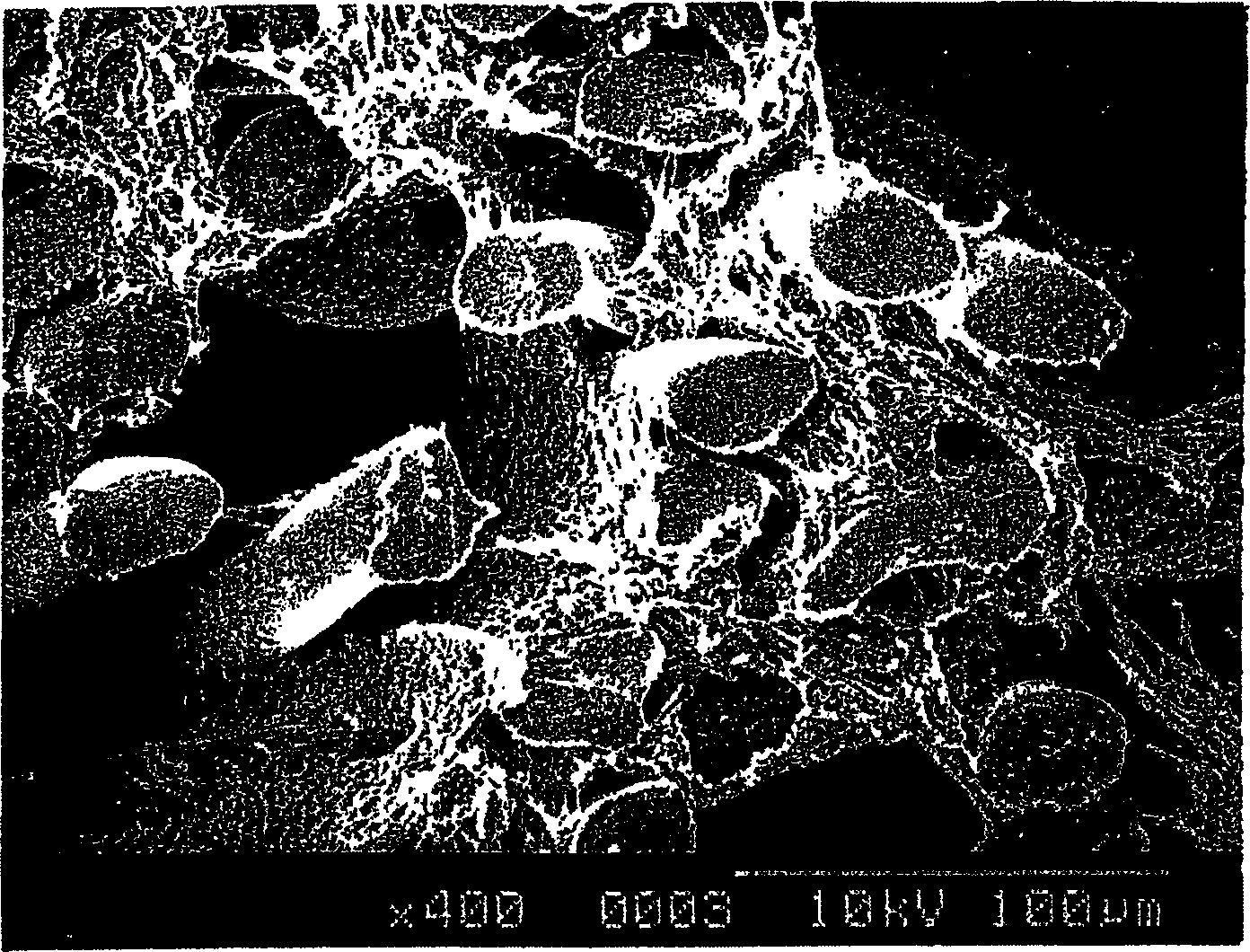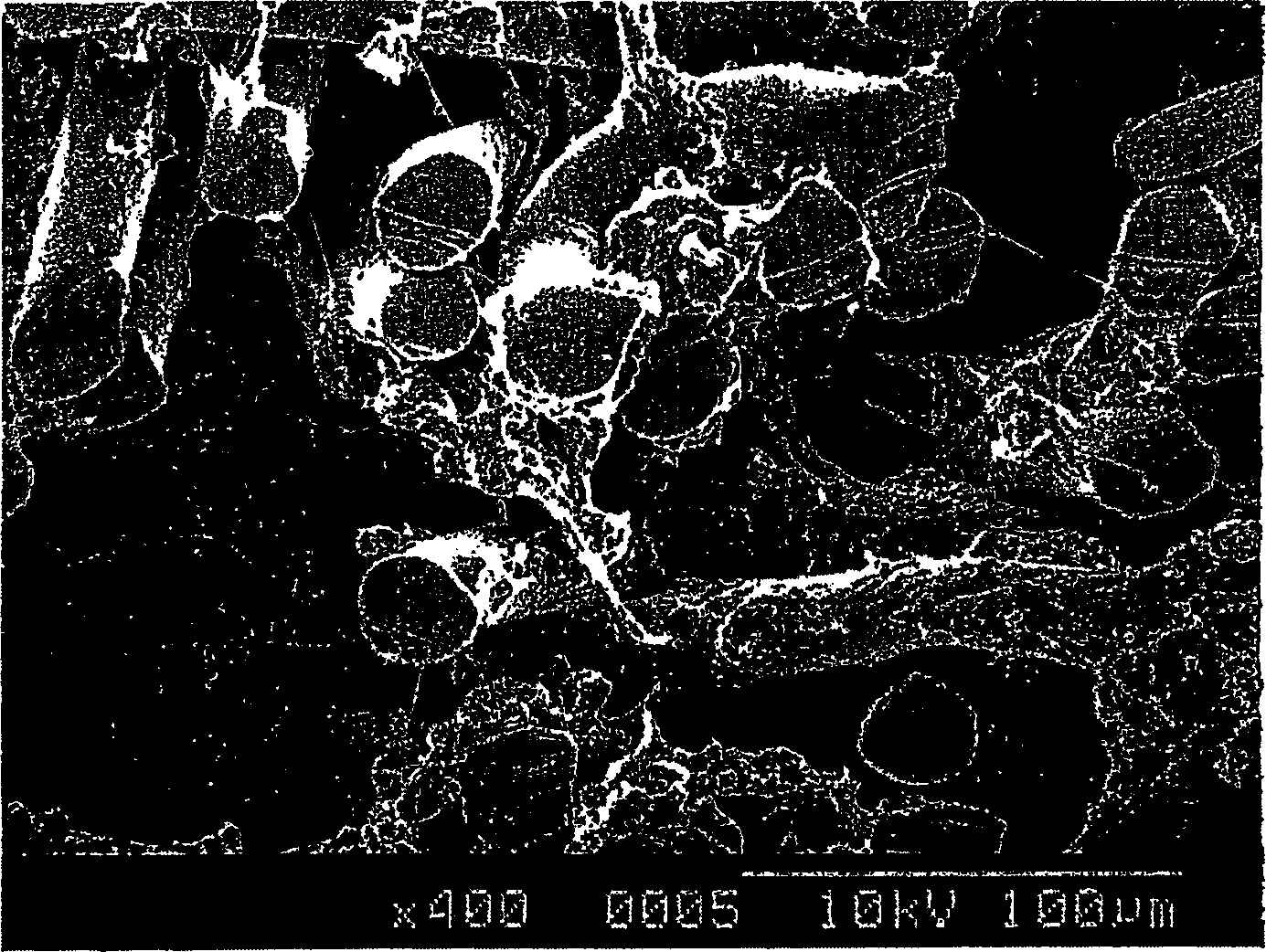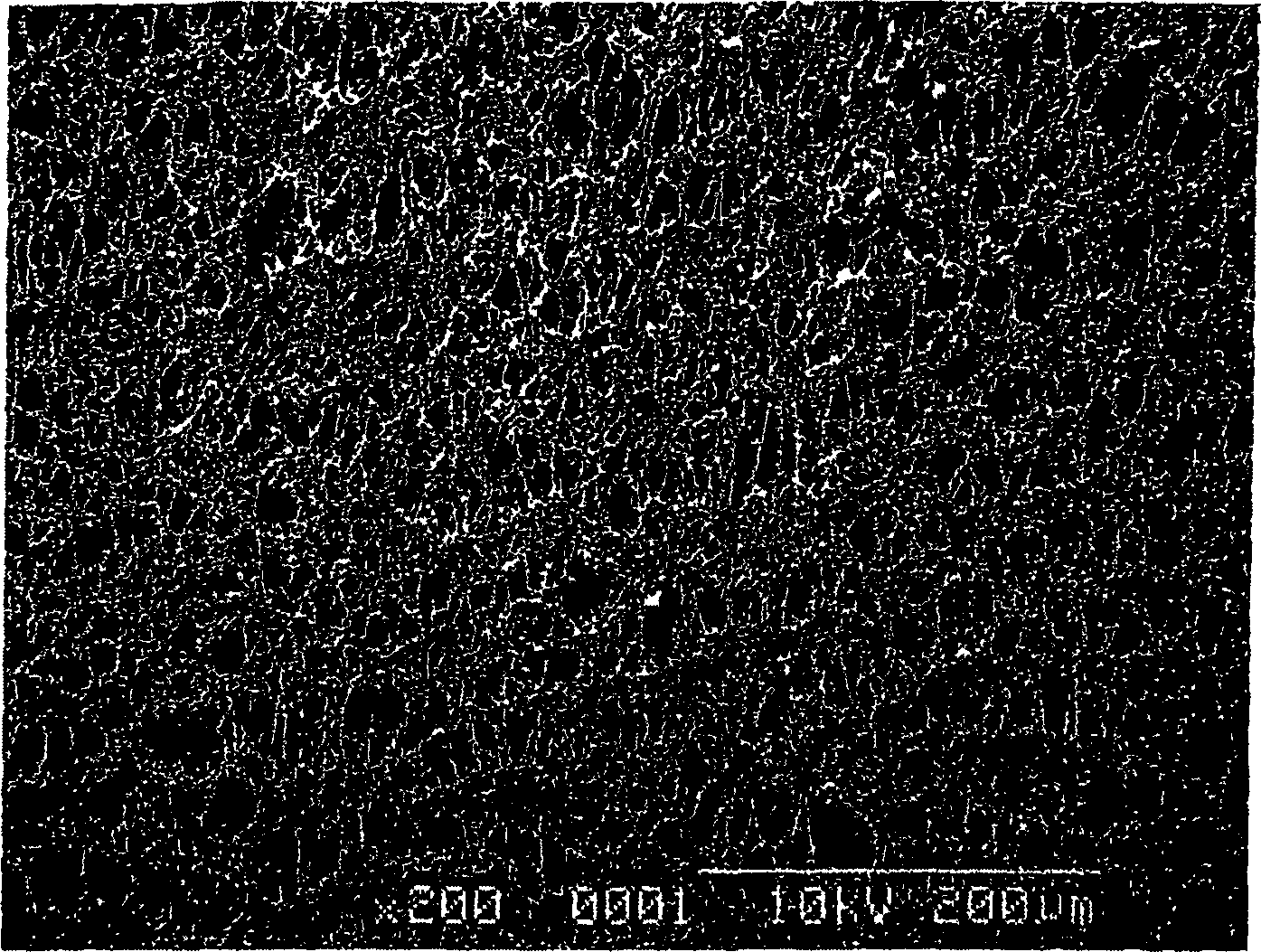Process for producing porous structure, artificial leather, and synthetic leather
A manufacturing method and structure technology, which are applied in textiles, papermaking, fiber processing, etc., can solve the problems of difficulty in obtaining porous structures stably, and achieve the effects of simple method, excellent strength and excellent stability.
- Summary
- Abstract
- Description
- Claims
- Application Information
AI Technical Summary
Problems solved by technology
Method used
Image
Examples
Embodiment
[0052] Hereinafter, the present invention will be described in more detail with examples, but the present invention is not limited in any way by these examples.
[0053] In addition, in the examples and comparative examples, the porous structure was evaluated by the following method.
[0054] (1) Porous structure
[0055] A scanning electron microscope [Hitachi, Ltd., S-2400] was used to observe the cross section.
[0056] ○: It is found that a dense porous structure is formed.
[0057] △: It is found that a porous structure is partially formed.
[0058] ×: The formation of a porous structure is not observed.
[0059] (2) Tear strength
[0060] Measured according to JIS L19065.4. (C) pendulum method.
[0061] (3) Feel
[0062] According to the sense of touch, the evaluation is divided into 5 levels from level 1 (rough and hard) to level 5 (soft).
[0063]In addition, in Synthesis Examples 1-7, Synthesis Example 9 and Comparative Synthesis Example 4, the viscosity was measured with...
Synthetic example 1
[0064] Synthesis Example 1 (Waterborne Polyurethane Water Dispersion)
[0065] In a four-necked flask equipped with a stirrer, a reflux cooling tube, a thermometer and a nitrogen introduction tube, 75.9 g of poly 1,4-butanediol (average molecular weight 1,000) and 19.0 g of polyoxyethylene polyoxypropylene random copolymer glycol were added (The average molecular weight is 1,000, and the oxyethylene content is 70% by mass), 2.5g of trimethylolpropane, 0.001g of dibutyltin dilaurate and 60g of methyl ethyl ketone. After uniformly mixing, 42.6g of dicyclohexylmethane diisocyanate is added. The reaction was carried out at 75°C for 300 minutes to obtain a methyl ethyl ketone solution of a urethane prepolymer having a free isocyanate group relative to the solid content of 1.7% by mass. After the solution was cooled to 30°C, 0.1 g of dodecyl phosphate and 6.0 g of polyoxyethylene tristyryl phenyl ether (HLB15) were added, mixed uniformly, and 260 g of water was slowly added to emulsify ...
Synthetic example 2
[0066] Synthesis Example 2 (Waterborne Polyurethane Water Dispersion)
[0067] In the same reaction device as in Synthesis Example 1, 74.5 g of poly 1,4-butanediol (average molecular weight 1,000), 17.2 g of polyoxyethylene polyoxypropylene random copolymer glycol (average molecular weight 1,000, oxyethylene content 70% by mass), 1.3g of 1,4-butanediol, 1.9g of trimethylolpropane, 0.001g of dibutyltin dilaurate and 60g of methyl ethyl ketone, after uniformly mixing, add 45.1g of dicyclohexylmethane diisocyanate The reaction was carried out at 75°C for 300 minutes to obtain a methyl ethyl ketone solution of a urethane prepolymer with a free isocyanate group relative to the solid content of 1.9% by mass. After the solution was cooled to 30°C, 0.1 g of lauryl phosphate and 6.0 g of polyoxyethylene tristyryl phenyl ether (HLB15) were added, mixed uniformly, and 260 g of water was slowly added to emulsify phase transfer and dispersion. Then, a polyamine aqueous solution in which 5.6 g ...
PUM
| Property | Measurement | Unit |
|---|---|---|
| Viscosity | aaaaa | aaaaa |
| The average particle size | aaaaa | aaaaa |
| Viscosity | aaaaa | aaaaa |
Abstract
Description
Claims
Application Information
 Login to view more
Login to view more - R&D Engineer
- R&D Manager
- IP Professional
- Industry Leading Data Capabilities
- Powerful AI technology
- Patent DNA Extraction
Browse by: Latest US Patents, China's latest patents, Technical Efficacy Thesaurus, Application Domain, Technology Topic.
© 2024 PatSnap. All rights reserved.Legal|Privacy policy|Modern Slavery Act Transparency Statement|Sitemap



